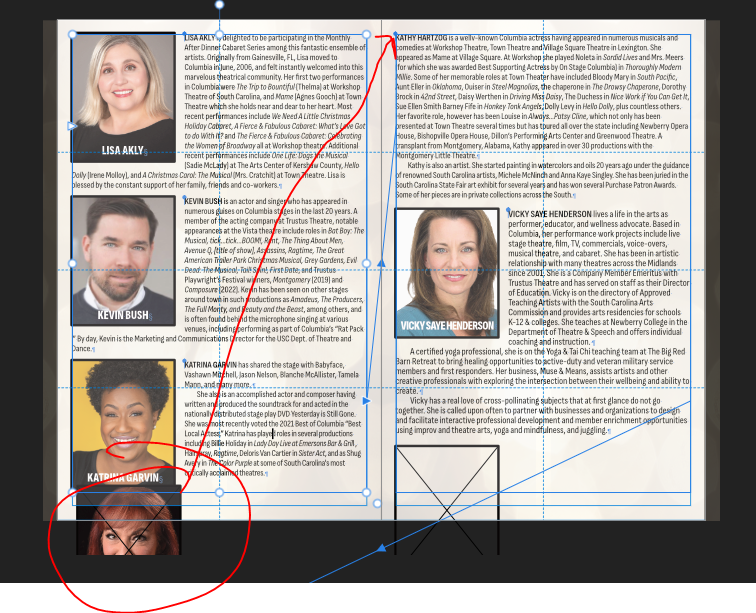Search the Community
Showing results for tags 'pagination'.
-
I have a producing program. Each performer has a headshot and a bio. I want the headshot to appear next to the top line of the corresponding bio. My text style has widows/orphans turned on to prevent single lines at the top or bottom of a frame. The circled photo is placed as a floating image to line up with the paragraph (see arrow). The only way I have found to make this image move is to physically shorten the text frame on the left (picture 2). I very much dislike this because if the text changes length, the frame has to be manually adjusted again to allow for it. If I make the image inline, I'm unable to add a wrap to the image (see picture 3). I would have thought that float with text did exactly that. If the text to which the image is "pinned" moves, shouldn't the image move with it and not require manual resizing of text frames?
- 1 reply
-
- inline image
- pagination
-
(and 2 more)
Tagged with:
-
New here — not much luck yet with forum search. If there's a discussion about this, apologies for not having found it. Back in the Neolithic I used QuarkXPress, which supported a tagging method for text import: Simple codes embedded in plain text were transformed into complex formatting during import. The competition didn't have such a feature at the time. It was among several reasons for QXP's becoming the program of record for book pagination (until InDesign came along). Even years before microcomputers took over the world, the typesetting systems I used had tagging and translation-table features. Same purpose: Prepare text containing simple codes, then get complex formatting during text import. The machines' CPUs ran at glacial speeds compared with what we have now. But the text-import systems were fast and efficient. It's orders of magnitude faster than importing plain text into a design/pagination program and then hand-formatting it. Search/replace is not efficient unless a program supports complex search/replace enabling it to find starting and ending tags and formatting text located between those tags. Even at that, having to do it repetitively is tedious and time-consuming. (If search/replace can be controlled via scripting, that certainly helps.) Manipulating text outside the pagination program is inherently more efficient. It can be done with powerful and fast tools ideal for that purpose (Python, Perl, Ruby, and so forth). Affinity Publisher looks like an excellent contender. It too needs this kind of feature. If the company has no such plans for the near future, I hope the program has a plug-in architecture enabling a third party to add this functionality. To anyone importing a lot of text, that kind of automation is worth paying for.
- 61 replies
-
- plain text
- text import
- (and 8 more)





